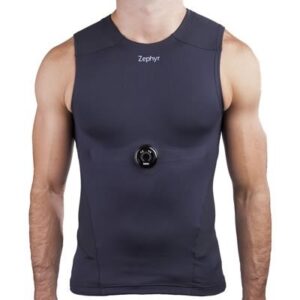At ilumivu we receive a lot of requests about ambulatory assessment of heart rate and heart rate variability (HRV) and how to best integrate these metrics with mobile Ecological Momentary Assessment (mEMA). Some of our clients are interested in capturing heart rate (HR) for the study of physical movement and fitness, others are interested in capturing heart rate variability (HRV) either as a marker or cardiovascular health or emotional wellbeing.
Either way there are many devices readily available to help you collect these data from your patients or participants as they go about their daily lives. We will not review all these here but will focus on the issue of integration with mobile Ecological Momentary Assessment systems to enable self-report annotation of the physiological data.
As is the case with Activity Tracking there is no one perfect solution for ambulatory heart rate triggered Ecological Momentary Assessment. Your decision on which device to choose will come down to the relative importance of the following factors:
- Physical design: is it feasible and desirable for your participants to wear a chest strap, a wrist band, a finger or ear sensor?
- The accuracy of the data: do you need highly accurate readings with millisecond precision or will a more coarse overview of how heart rate is changing over time do the job?
- The frequency of data capture: do you want to be able to trigger a mEMA survey the instant a change in HR or HRV is detected or do you plan a more periodic (e.g. daily) sampling that includes summary HR data for the participant to reflect upon?
The most accurate way to get HR data is still with a chest strap. There are many options available from companies such as Under Armour, Garmin, Wahoo and Zephyr. These companies provide chest straps or in the case of Zephyr, shirts, that include the embedded technology (e.g. Zephyr BioHarness). These are all relatively easy to wear although there are reports in the literature of chest straps being uncomfortable (Spierer et al., 2015). Other options that provide very accurate data but may be considered more burdensome for participants are stick-on chest electrodes (e.g. LifePatch and BodyGuard from First Beat).

Most consumer devices measuring HR have not undergone scientific validation. The Zephyr BioHarness has been validated in an ambulatory setting and showed good reliability and validity for capturing RR intervals (required for HRV calculations). It did however show more errors at higher speed so many not be appropriate for studies with athletes (Johnstone et al., 2012). The Hexoskin Vest shows high reliability for collecting HR again at slow speed (Villar et al., 2015). The Hexoskin vest also has Bluethooth connectivity and an API allowing us to get the raw data so could be used for heart-based triggering of mobile surveys with the mEMA app.
An alternative approach to capturing heart rate data is with a pulse oximeter which capitalizes on the fact that oxygenated and deoxygenated blood absorb different wavelengths of light. Greater levels of oxygenated blood occur after a heartbeat and this change in wavelength is used to measure when the heart is beating. This can be done from the wrist, the finger tips or the ear lobe. Some devices require the fingertip to be placed on a specific sensor for a few seconds to collect HR data (e.g. Withings Pulse Ox, Elite HRV) which is not conducive to ambulatory tracking but may work well for some study designs. If the fingertip touch method will work for your study then you can also consider Smartphone apps that will do the same from the phone camera (e.g. Instant Heart Rate). However, with these apps you are on your own when it comes to data aggregation and integration with EMA as they are designed for use by individuals not researchers overseeing multiple participants.
Other devices will collect HR data continuously from the wrist (e.g. Microsoft Band, Basis Band, Polar V800, Jawbone Up3). The only wrist worn device scientifically validated for detection of RR intervals is the Polar V800 which showed high correlation with a standard ECG (Giles et al., 2016). The Polar V800 retails at $288 making it impractical for many studies.

The major problem researchers face with consumer wearables is getting access to data with enough granularity to be useful. Even if the device you have selected is capturing the data you want with sufficient accuracy the likelihood of the sensor company having a way of releasing the raw data to you is extremely low. At best you will get a daily summary or highly processed data that tells you very little about daily fluctuations.
Our current top pick for ambulatory assessment of heart rate and HRV is the Garmin Vivíosmart 4. It is a lightweight, easy to wear device. The battery lasts for days on a single charge. Garmin’s SDK (Software Development Kit) allows us to get real-time heart rate and inter-beat-interval data – from which we can calculate HRV. These data are transmitted via Bluetooth directly from the wearable device to the mEMA app on the phone. From there we can send the raw data up to the ilumivu servers to be integrated with incoming EMA data or use them on the phone to trigger mobile surveys. You can use this, for example, to trigger a mobile survey when HR rise above a certain threshold for a number of minutes or when HRV departs from that individual’s usual parameters or to provide an hourly display of a user’s HRV levels to them on their phone. It also allows us to create aggregated data sets across all your participants and custom data displays for both researchers and participants.
